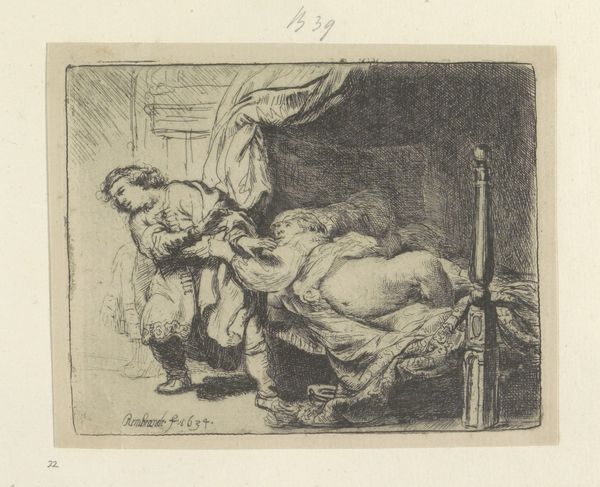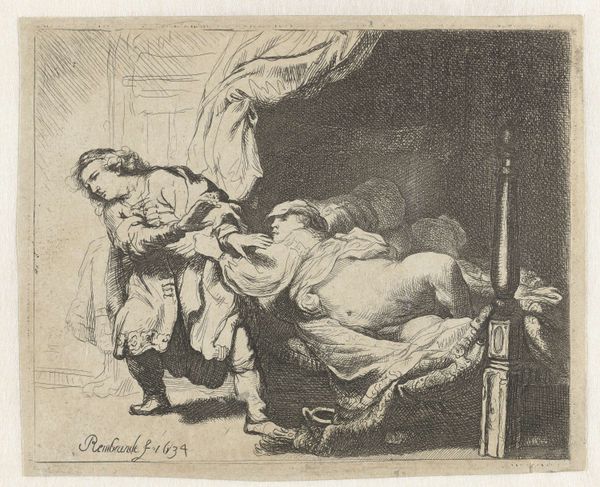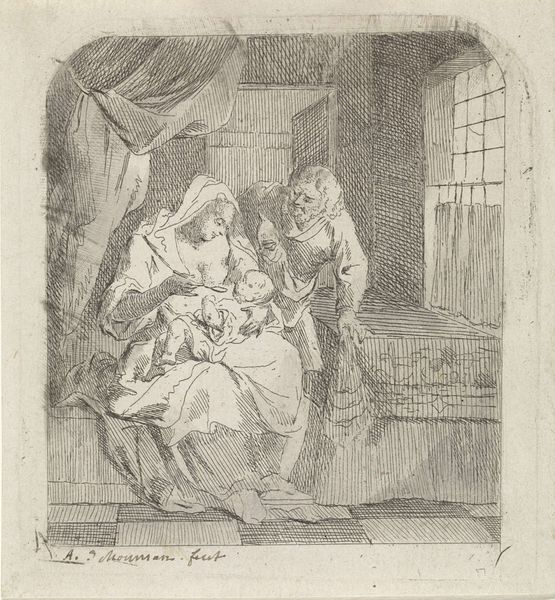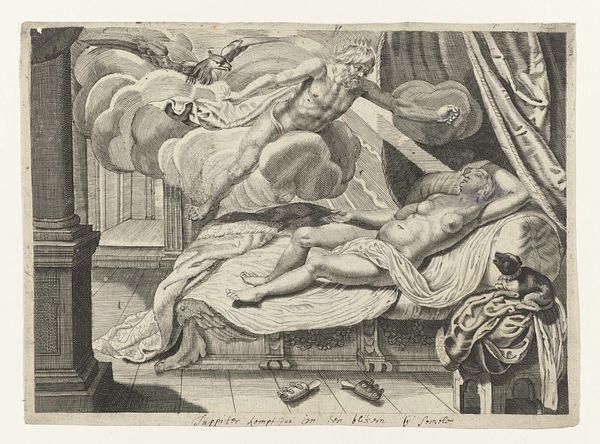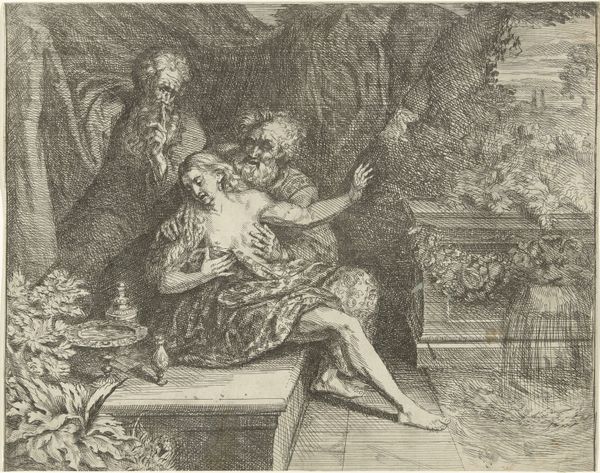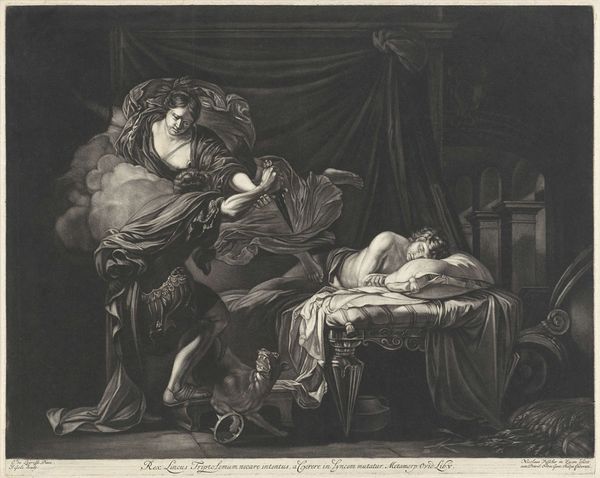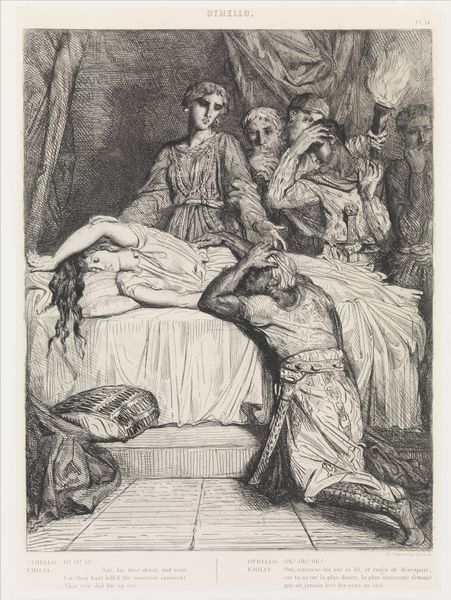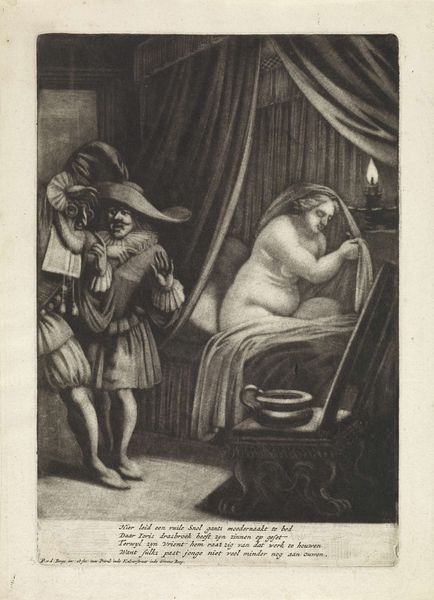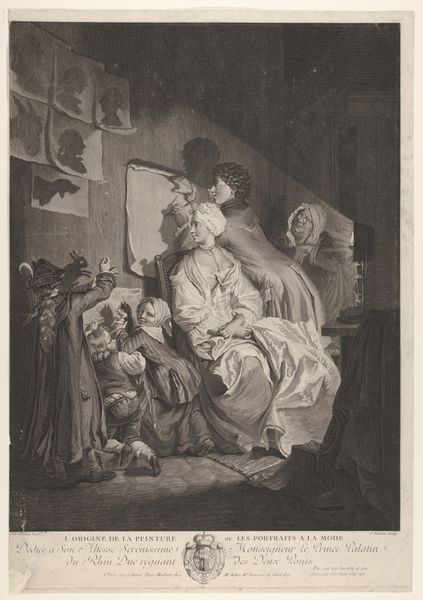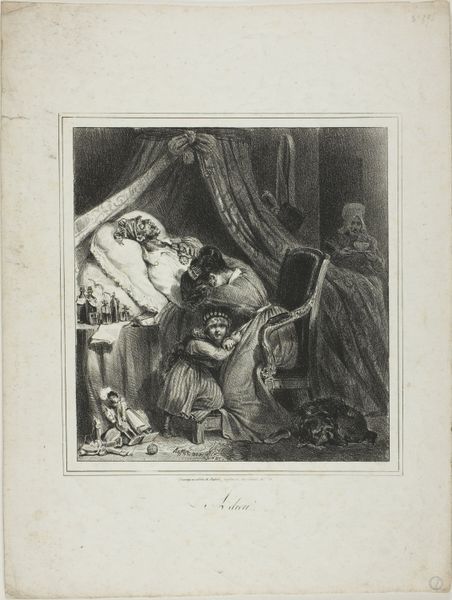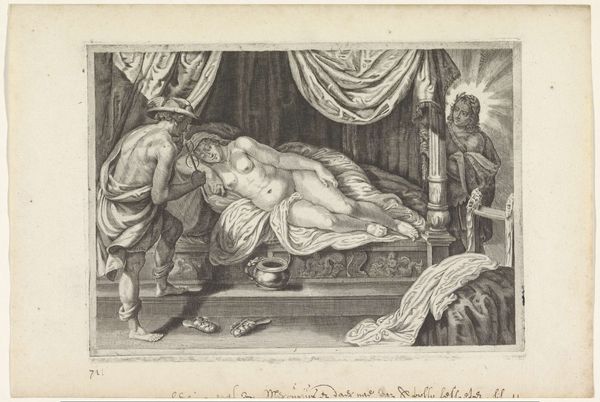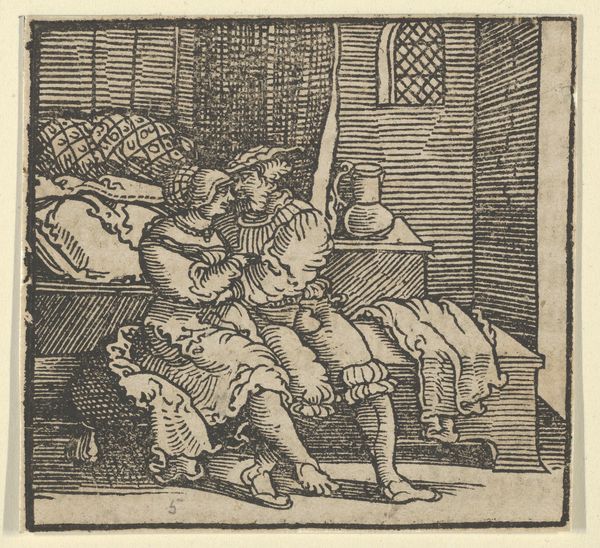
drawing, etching
#
drawing
#
baroque
#
etching
#
figuration
#
history-painting
#
nude
Dimensions: 9 x 12 cm
Copyright: Public domain
Curator: This etching by Rembrandt van Rijn, dating from 1634, depicts the biblical story of Joseph and Potiphar's wife. It's a dramatic scene. Editor: It's definitely intense. The raw texture of the etching creates a really unsettling feeling. You can almost feel the coarse fibers of the bedclothes and the desperation in their struggle. Curator: Indeed. Rembrandt often used etching to explore narratives that highlighted human psychology, and we see that here with the conflicting emotions so vividly displayed. Consider the historical context of representing biblical stories in art; it was common to show moral lessons through drama, like this. Editor: The material choices are interesting. Why etching, and not painting, for instance? An etching like this allowed for reproduction. Prints were commodities, making art more accessible and democratizing storytelling. It transforms this moment of sexual aggression and resistance into a commercial product, a narrative up for grabs. Curator: Precisely, it allowed wider access to these visual interpretations of biblical tales. What's striking to me is how Rembrandt depicts Potiphar’s wife; she isn’t simply a seductress, she embodies power, and desperation stemming from her social status within a patriarchal world. The power dynamics are really heightened. Editor: Absolutely. The lines of the etching almost seem to claw at Joseph. It reinforces her grasping desire, literally embedded within the material of the artwork itself. Her physical bulk also signifies power. And this power play is displayed over draped textiles that feel cheaply rendered, mass produced to underscore the wife’s own complicity as the buyer of material excesses within this intimate space. Curator: A valid interpretation. I also consider how the composition guides our reading. Notice Joseph is literally running away, seeking escape and higher moral ground; the heavy, dark shading on his form creates this sense of urgent motion, contrasting against the more deliberate lines defining the wife. It’s not only physical resistance, but perhaps a statement against what he sees as her immorality within the context of 17th century Dutch values. Editor: It’s all there. What Rembrandt does masterfully, as revealed through the deliberate marks on the metal plate, is complicate this seemingly simple story. Curator: Ultimately, "Joseph and Potiphar's Wife" offers us a fascinating lens to understand how stories, gender roles, and moral arguments were visually constructed and consumed in the 17th century. Editor: I agree. Thinking about the labor involved in the creation of prints allows us to understand art production in connection to commercial interests. And so, it’s always a negotiation.
Comments
No comments
Be the first to comment and join the conversation on the ultimate creative platform.

